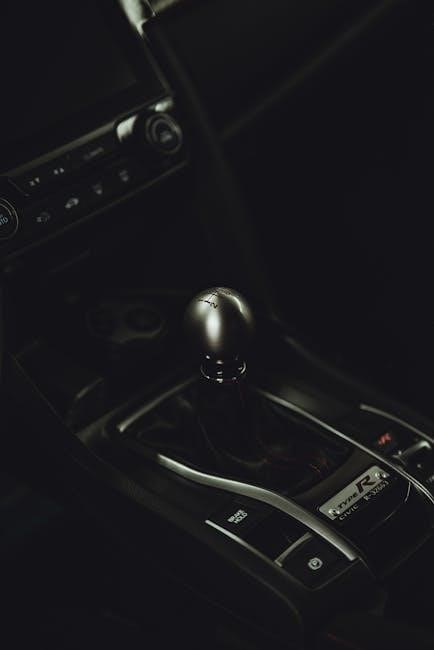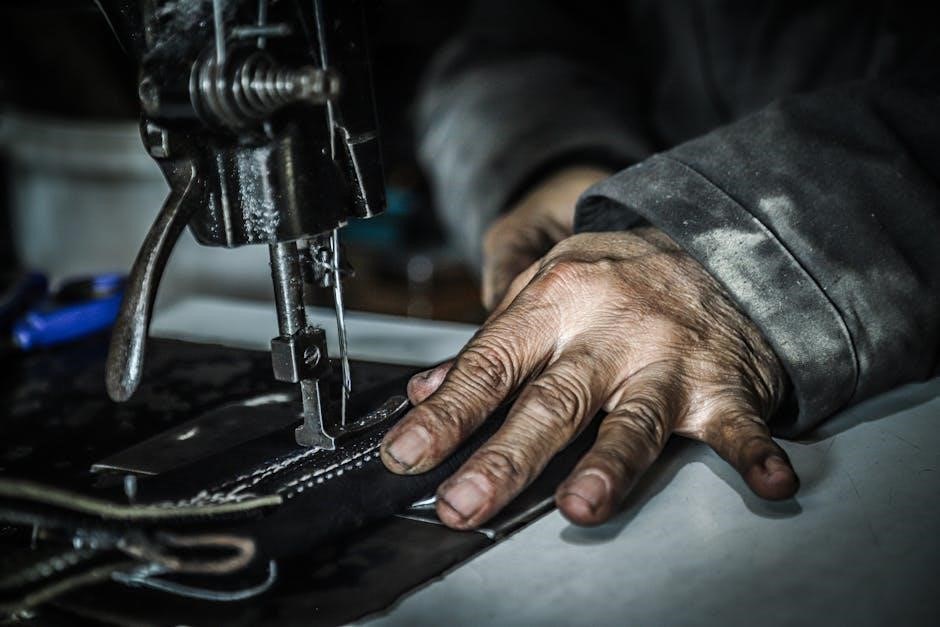BMW 335i Manual Transmission: An Overview
The BMW 335i, celebrated among enthusiasts, offered a desirable manual transmission option․ This feature provided drivers with enhanced control and a more engaging connection to the vehicle․ It created a more raw and visceral experience․
The BMW 335i, a performance-oriented variant of the esteemed 3 Series, captivated driving enthusiasts with its available manual transmission․ Offered across various chassis generations, including the E90, E92, and E93, the six-speed manual provided a direct and engaging driving experience․ This option allowed drivers to fully harness the power of the 335i’s engine, fostering a deeper connection between man and machine․
The manual transmission-equipped 335i became a sought-after configuration for those prioritizing driver involvement and a classic sports car feel․ Its blend of performance and driver engagement solidified its place in automotive enthusiast circles․ This choice differentiated it from automatic counterparts․

Manual vs․ Automatic: A Comparison for the 335i
The BMW 335i offered both manual and automatic transmissions, presenting distinct driving experiences; The manual prioritized driver engagement and control․ The automatic emphasized convenience and smoother shifting for daily commutes․
Driving Experience: Engagement and Control
The manual transmission in the BMW 335i provides a uniquely engaging driving experience, fostering a strong connection between the driver and the car․ With easy clutch operation and precise throws, it’s surprisingly forgiving, even for novice manual drivers․ The driver gains direct control over gear selection, optimizing power delivery and engine braking․ This level of control enhances the feeling of being connected to the car and the road․ This enables more spirited driving, allowing drivers to extract the most performance from the engine․ The manual 335i transforms a regular commute into a more involved and satisfying experience․
Performance Differences: Acceleration and Handling
While the automatic transmission in the 335i offers quick shifts, the manual transmission provides distinct performance advantages․ A skilled driver can often achieve quicker acceleration times with the manual, exploiting the engine’s powerband more effectively․ The manual also allows for greater control during cornering, enabling precise gear selection for optimal traction and balance․ The driver’s ability to downshift and control engine braking enhances handling, especially on winding roads or tracks․ Though modern automatics boast advanced technology, the raw, direct connection of a manual transmission still delivers a unique performance edge․
ZF S6-53: The Specific Manual Transmission Model
The ZF S6-53 is the specific six-speed manual transmission found in many BMW 335i models․ This transmission is known for its robust design and ability to handle the engine’s output․
Applications: 335i and Other BMW Models
The ZF S6-53 manual transmission wasn’t exclusive to the 335i; it found its way into several other BMW models․ Specifically, the pre-LCI (Life Cycle Impulse) versions of the 135i and 535i also utilized this robust gearbox․ This widespread application highlights the transmission’s versatility and suitability for various engine configurations within the BMW lineup․ The S6-53 was designed for longitudinal engine layouts, making it a fitting choice for BMW’s rear-wheel-drive and all-wheel-drive platforms․ Its presence in different models speaks to BMW’s commitment to providing engaging driving experiences across its range, offering enthusiasts the option of a manual transmission in multiple vehicle styles․
Common Issues and Reliability of the Manual Transmission
The 335i manual transmission, while generally reliable, can experience common issues․ Synchro problems, particularly with the 1-2 shift, and clutch wear are notable concerns․ These can affect the overall driving experience and require attention․
Synchro Problems and Clutch Wear
One of the more frequent issues reported with the BMW 335i’s manual transmission revolves around synchro wear, especially affecting the lower gears like first and second․ This wear manifests as difficulty shifting smoothly, often accompanied by grinding noises during gear changes․ Aggressive driving habits can accelerate this wear․
Clutch wear is another common concern․ Factors such as driving style, modifications increasing engine power, and the overall age of the vehicle contribute to the clutch eventually needing replacement․ Slipping, shuddering upon engagement, or a high engagement point are telltale signs of a worn clutch needing attention․

Modifications and Upgrades for the 335i Manual
Owners often seek modifications for their 335i manuals․ These upgrades range from clutch enhancements to differential swaps․ The aim is to improve performance, handling, and the overall driving experience of the vehicle․
Clutch Upgrades for Increased Power
For 335i owners seeking to extract more power from their engines, upgrading the clutch is a common modification․ The stock clutch may struggle to handle the increased torque from aftermarket tunes or modifications․ Upgraded clutches are designed with stronger materials and increased clamping force․ This prevents slippage and ensures efficient power transfer․ Common upgrades include performance clutches, and even full-face Kevlar clutches․ These options provide greater heat resistance and durability․ Selecting the right clutch depends on the power goals and intended use of the vehicle, as well as the driver’s overall preference․
Limited Slip Differential (LSD) Conversions
To significantly improve traction and handling, many 335i manual owners opt for a limited slip differential (LSD) conversion․ An LSD helps distribute power more evenly to the rear wheels, reducing wheel spin during acceleration and cornering․ This is particularly beneficial for modified 335i models with increased power output․ LSD conversions involve replacing the stock open differential with an LSD unit․ These conversions will enhance the driving dynamics and provide more predictable handling characteristics․ This is also beneficial for street, strip, and full race vehicles․ An LSD Conversion will improve handling in every day driving․

Swapping a 335i to Manual Transmission
Converting a 335i from automatic to manual transmission is a complex but rewarding project․ This swap involves significant mechanical and electronic modifications to ensure proper functionality and integration․
Parts Needed for the Conversion
The conversion process necessitates a comprehensive list of parts․ A crucial component is, of course, the 6-speed manual transmission itself, ideally a GS6-53BZ model․ The flywheel and clutch assembly are also essential․ Furthermore, a brake and clutch pedal box ensures proper pedal placement․ A driveshaft tailored for the manual transmission is also vital․
Additionally, the rear differential and axles may need replacement or modification․ A transmission mount crossmember specific to the manual setup is needed․ The manual shift assembly, including the boot, provides the tactile feel․ Finally, a transmission wiring harness and assorted hardware will allow for complete integration․

Resale Value: Manual vs․ Automatic 335i
The manual transmission 335i generally holds a stronger resale value compared to its automatic counterpart․ This is attributed to its increasing rarity and the high demand from driving enthusiasts seeking more engagement․
Demand and Market Perception of Manual Transmissions
The demand for manual transmissions in cars like the 335i reflects a growing appreciation for driver engagement․ Many driving enthusiasts see the manual gearbox as a crucial element for a pure driving experience․ In contrast to modern automatics and dual-clutch systems, the manual transmission offers control and a direct connection between driver and machine․ This perception is especially prevalent in the used car market, where well-maintained manual 335i models are seen as particularly desirable․ This desirability often translates to higher resale values and faster sales compared to automatic versions․ It is a testament to the enduring appeal of the manual transmission․
Finding a 335i with a Manual Transmission
Locating a 335i equipped with a manual transmission requires patience and diligence․ Specific models, particularly those with rare options or in pristine condition, present additional challenges for prospective buyers․
Rarity and Availability of Specific Models
The manual transmission-equipped BMW 335i models, especially those combined with xDrive all-wheel drive, are considered relatively rare finds within the used car market․ Enthusiasts actively seek these specific configurations for their unique blend of performance and driver engagement․ The availability varies depending on the chassis generation, with certain model years being more commonly found with the manual option․
However, finding one in excellent condition with low mileage can be a significant challenge․ The unicorn of a 2013 BMW F30 335i with a manual transmission, rear-wheel drive, and no M badge is a prime example․
Manual Transmission Fluid and Maintenance
Maintaining the manual transmission of a BMW 335i is crucial for its longevity․ Regular fluid changes using recommended fluids at specified service intervals are essential for optimal performance and reliability of the transmission․
Recommended Fluids and Service Intervals
For the BMW 335i’s manual transmission, using the correct fluid is paramount for smooth operation and preventing wear․ BMW typically recommends a specific type of low-viscosity, high-performance transmission fluid․ Checking the owner’s manual or consulting with a BMW specialist is crucial to determine the exact fluid specification for your model year․
Service intervals for fluid changes vary, but a good rule of thumb is every 30,000 to 60,000 miles, or every 2-4 years, depending on driving conditions․ More frequent changes are advisable for vehicles subjected to aggressive driving or track use․ Regular inspections for leaks around the transmission are also recommended․
